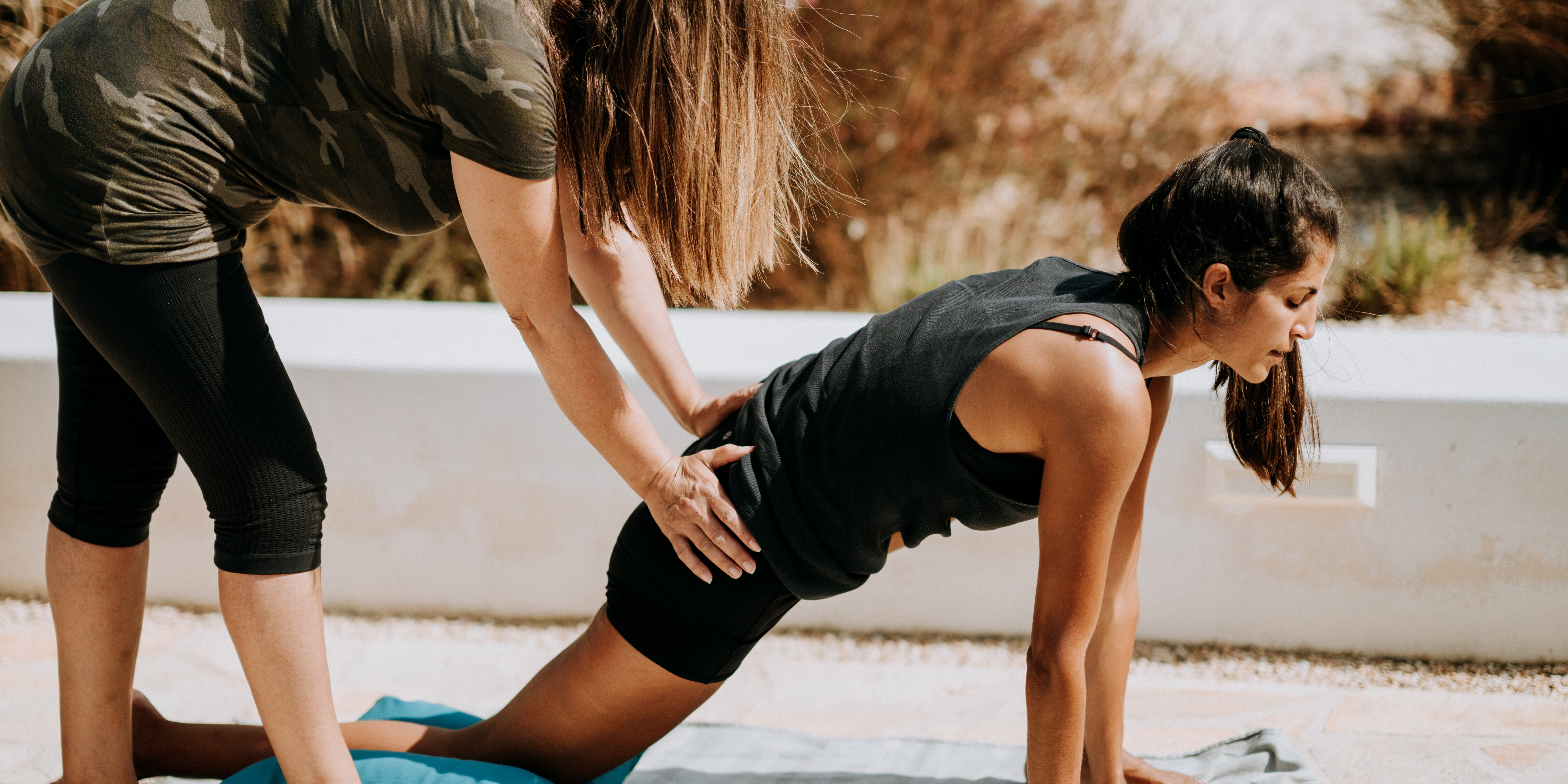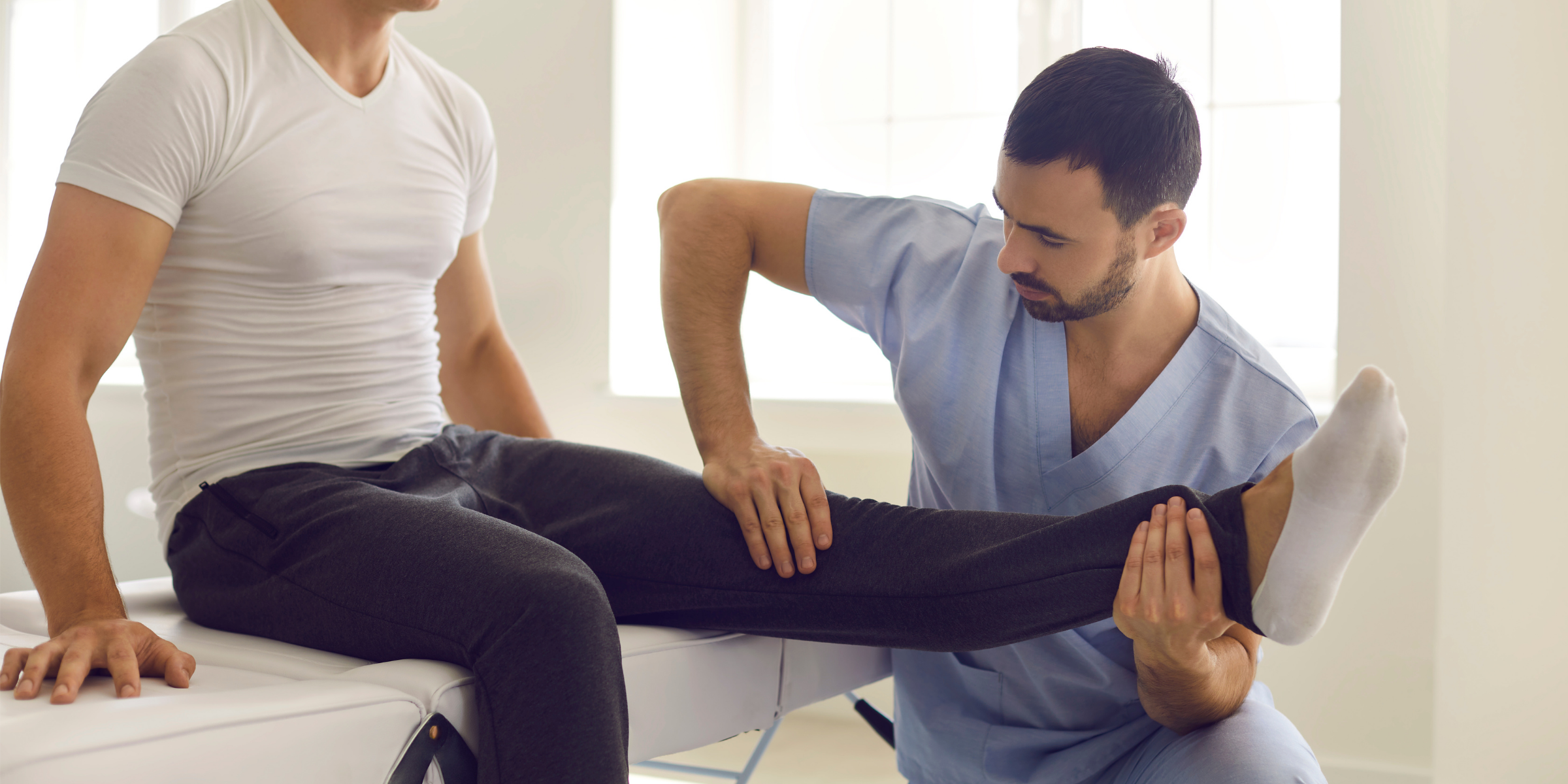Raise your hand if you’ve experienced hip, hamstring or lower back pain or mobility issues at some point in your life.
Improving our hip health is essential not only to strengthening our movement mechanics, such as standing up, walking, running or climbing stairs, but it helps to mitigate symptoms of pain or discomfort over the course of our lives.
Throughout this article, we will be discussing the impact of poor hip health before diving into how to address these common symptoms using 4 simple and effective hip mobility exercises.
Let’s get into it!
Anatomy of the Hip
To better understand our joint mechanics, let’s take a closer look at the anatomy of the hips.
The hip is a complex and incredibly functional joint that is essential to help us move around with ease.
The joint is comprised of two bones:
- the thigh bone (also known as the femur)
- the pelvis (composed of the ischium, ilium and pubis)
These two bones connect with one another in such a way that it creates a “ball in socket” joint. This type of joint is capable of a wide range of motion, giving us movements like flexion (when we sit), extension (when we stand), abduction (when we extend our leg out to the side) and adduction (when we bring our leg back to neutral/standing position).
Together with all the many muscles, ligaments and tissues working together as one functional unit, we are capable of all types of movement patterns — so long as we keep them mobile!
Why are my hips always so tight?
One of the major culprits behind hip pain or tightness is sitting. When we sit, we cause our hip flexor muscles to shorten while our hamstrings and glute muscles lengthen. Over time, these muscles progressively weaken, and in some cases, may cause a painful condition known as adaptive shortening.
Common injuries due to weak or tight hips:
- Hip flexor muscle strains
- Hip flexor tendonitis
- Iliopsoas syndrome
- Hamstring pain or tightness
- Snapping hip syndrome
- Femoroacetabular impingement
- Back pain
- Ligament tears
- Bursitis of the hip
- Patellofemoral stress syndrome
- Iliotibial band friction syndrome
- Patellar tendonitis
- Knee pain
What does hip immobility have to do with back pain?
Spending long hours at work, in class or on the couch can have a similar impact on our back health. As a result of sitting, we create muscle imbalances and weakness that cause other muscles to overcompensate — in this case, it’s usually the lower back that takes over.
Why is Hip Mobility so Important?
As you may have already predicted, having muscle tightness can directly affect our range of motion. As an outcome, this will impact our function and athletic performance on a day-to-day basis.
Improving our hip mobility can keep the joint supple and healthy as we age. Much like our muscles and bones require load-bearing activities such as weight lifting or endurance exercises, our joints need regular movement and usage to maintain a healthy and pain-free range of motion.
Benefits of Proper Hip Mobility
- It will help improve the synergy between all other muscle groups and reduce the need for overcompensation of our back
- It can minimize or eliminate lower back pain (and knee pain) that is caused by over-activation of these muscles due to muscle weakness through the hips
- It can improve the stretch and power of your hip extension movement which is essential for walking, running, climbing stairs and jumping
- It can help you improve your rotational strength which is essential for most sports such as golfing, tennis, soccer and baseball
- It can help create more strength and stability through the posterior chain (i.e. hamstrings and glutes) to help perform basic functional exercises such as squats, deadlifts and kettlebell swings
Top Hip Mobility Exercises
It’s time to relieve your back pain and joint stiffness with 4 simple hip mobility exercises.
1. 90/90 Stretch
The 90/90 stretch is a dynamic movement that helps improve mobility in your hips by targeting the muscles surrounding the hip capsule such as the piriformis, psoas, hip flexors, abductors, adductors and glutes.
This stretch is incredibly functional because it challenges nearly every hip movement pattern that this ball-in-socket joint can accomplish. For example, even while the hip is either flexed internally or externally, it’s also in rotation throughout the stretch.
How to perform the 90/90 stretch:
- Find space on the floor to sit down with your legs bent at a 90-degree angle
- Keep your chest tall and press your hands on the ground behind you for support
- From here, you’ll want to rotate your knees to the opposite side of your body keeping them bent at a 90-degree angle
- If your right knee is in front, you’ll keep your feet in constant contact with the ground as your rotate your knees up and over so that your left knee is now in front
- During rotation, try to keep your pelvis/“sit bones” firmly on the ground
- Rotate from one side to the other 10-15 times
To advance in the level of difficulty, you can lift your hands off the ground and perform the same movement without support.
2. Hip Flexor Stretch
The classic hip flexor stretch is a simple yet incredibly effective mobility routine to help open up the hips and encourage proper movement and integration of the surrounding muscles. It can also encourage more blood flow to the area to improve oxygen transport and metabolic waste removal.
How to perform the hip flexor stretch:
- Starting from a kneeling position, plant one foot firmly on the ground in front of you so that you’re in a kneeling lunge position
- Place your hands on your hips for support
- “Tuck your tail” by posteriorly tilting your pelvis down behind your body without arching your back or bending forward
- Lean your hip forward slightly by pushing down onto your front leg for balance until you feel a stretch through your hip flexors
- Hold for 20-30 seconds and repeat 1-2 times on each side
If you’re looking to deepen the stretch, you can push further into the lunge position, keeping your pelvis tilted posteriorly while reaching one arm above your head (i.e. if your right knee is on the ground, raise your right arm above your head).
3. Banded Monster Walks
Now that we’ve covered two of the top stretches to increase hip flexibility, it’s time to talk strength!
The banded monster walks are a beneficial exercise to help activate the glutes and hamstrings. Since these muscles help with hip extension and abduction, they both play a major role in the function of our posterior kinetic chain.
In addition, the banded monster walks are a great functional movement to improve the stability of the hips and knees.
How to perform the banded monster walks:
- Place a band around your legs slightly above your knees
- Sit into a semi-squat position keeping your core engaged with your chest up for balance
- From here, take a step forward at a 45-degree angle, maintaining the distance between your knees without allowing the tension of the band to collapse your legs inward
- Take another step on the other side as you move in a forward direction
- Repeat this exercise 5-10 steps forward then 5-10 steps backwards for 2-3 sets
4. Copenhagen Plank
The Copenhagen plank is a lesser-known exercise that helps strengthen the hip muscles. As a side plank variation, this exercise works to target the muscles of the inner thigh also known as the adductors.
Another great benefit of the Copenhagen plank is to strengthen the deep spinal stabilizing muscle, known as the quadratic lumborum and help minimize your risk of back pain or injury.
How to perform the Copenhagen plank:
- Start by laying perpendicular to a bench in a side plank position with your body in a straight line and your elbow tucked under your shoulder
- Lift your top leg on a bench and drive your elbow down below you as you raise your hips off the ground
- Maintain a straight line with your body and keep your core activated
- Hold this position for 15-30 seconds then switch sides
During the raised side plank position, you have the choice to either hold your hip with your top arm or extend it straight up towards the sky.
Takeaways
- The hip is a complex and incredibly functional joint composed of several bones, muscles, ligaments and tissues that are all essential to help us move around with ease
- Sitting is one of the major culprits of tight muscles may be directly linked to muscle instability, immobility and pain
- To help you get back to pain-free range of motion, we recommend that you incorporate these 4 simple hip mobility exercises into your daily routine: 90/90, hip flexor stretch, banded monster walks and the Copenhagen plank
- Remember, regaining hip mobility is the easy bit — it’s all about maintaining this mobility throughout your life.
Drop a comment below if you have any other great hip mobility exercises or tips!





